Technical Data: as listed by Koolance
• Weight: 1.90 lb. (0.86 kg)
• Max Pressure @ 25°C: 2kgf/cm2 (28.5psi)
• Max Temperature: 150°C (302°F)
• Wetted Materials: Brass/Copper
• Fan Capacity: 3 x 120mm
• Fins Per Inch (FPI) 30
Wait – hold up there 30 FPI, that can’t be correct surely?
Dimensions are not listed, but Koolance do provide the following tech drawing.
Dimensions Measured on the Radiator Tested:

The (+2) is the measurement that the ports sit up proud of the casing.
Radiator Core Dimensions:

The core is made up of a single layer of 12 x 1.5mm tubes arranged in a standard U-Flow configuration. The fin arrangement is made of split, non-louvered fins with a 28 FPI count. Yes that is correct – 28 FPI.
This very high fin count shouldn’t be an issue for air-flow as the core is quite thin at just 20mm – but we don’t expect amazing performance with low fan speeds, especially in Push Only.
This picture is a reference which shows a typical U-Flow coolant flow path, where the coolant travels up all the tubes on one side (left in pic) of the rad and then returns down the other side. U-Flow is most easily recognized when the port end has 2 separate tanks, just like the CUV.
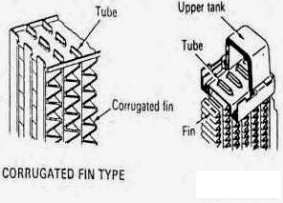 The split, non-louvered fins are spaced quite unevenly between the tubes, but with such a high fin count this is to be expected. In the following pics we can see fin counts of 28, 28 and 31, with the majority of my measurements taken being 28 FPI.
The split, non-louvered fins are spaced quite unevenly between the tubes, but with such a high fin count this is to be expected. In the following pics we can see fin counts of 28, 28 and 31, with the majority of my measurements taken being 28 FPI.
Finish and Features
The CUV has a matte black finish which to me seems a bit more like a primer coat than a proper finish. However I have been assured that this is not the case. Whatever it is the finish gets marked very easily and the sample arrived slightly scuffed straight from the box – with noticeable scuff lines from the cardboard now a permanent feature on the finish.

All visible joints look good, the side panels are solid and overall this rad feels and looks very solid.
Along one of the side panels is the seemingly mandatory branding we find on more and more of our gear. The logo on this sample has been applied slightly crookedly.
The fan mount spacing is the standard 15mm. The scuffing on the side panels I mentioned previously are more easily seen is this photo.
 The mounting holes are all located directly above tubes, so thankfully Koolance have chosen to have protection plates fitted on the CUV.
The mounting holes are all located directly above tubes, so thankfully Koolance have chosen to have protection plates fitted on the CUV.

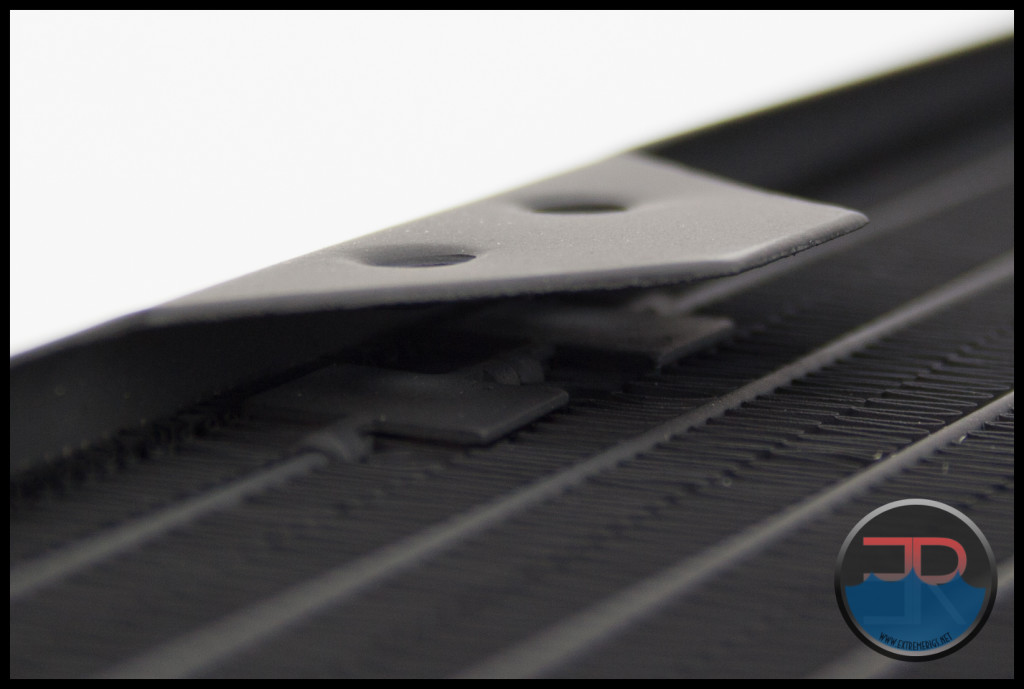
There are just 2 ports in total, 1 inlet and 1 outlet, and these ports are ~2mm proud of the casing.
 Extra ports offer potential for dedicated fill or drain ports depending on the installation orientation, so it’s a shame that Koolance chose not to include any.
Extra ports offer potential for dedicated fill or drain ports depending on the installation orientation, so it’s a shame that Koolance chose not to include any.

Unfortunately there is no dedicated fill/bleeder port on the return end either.
So we have a slim radiator with a very high FPI count that has tube protection plates but it has no additional ports. The finish is below average but the overall build is very good.
Let’s see how it performs…








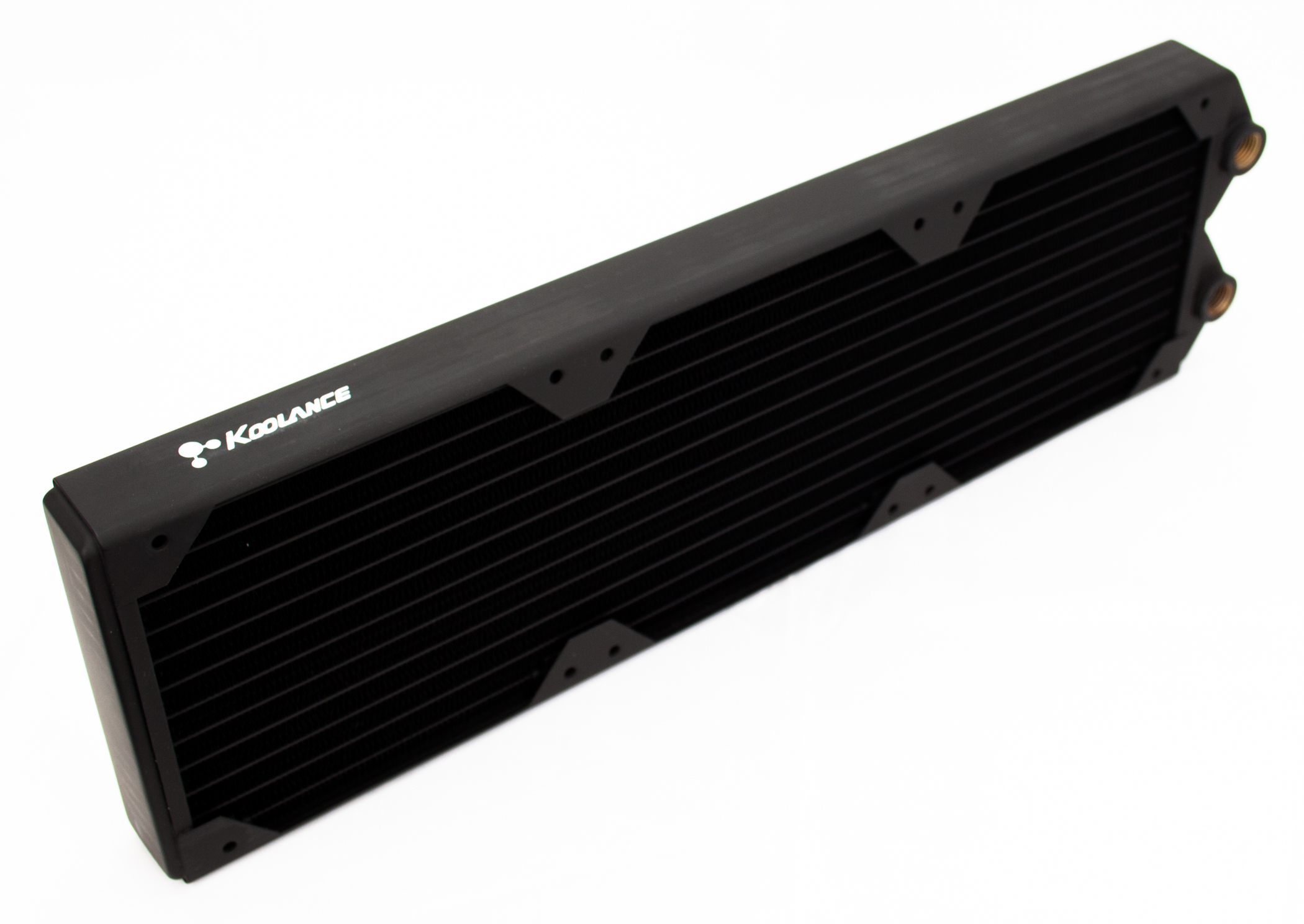

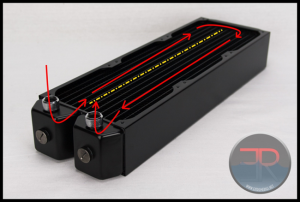

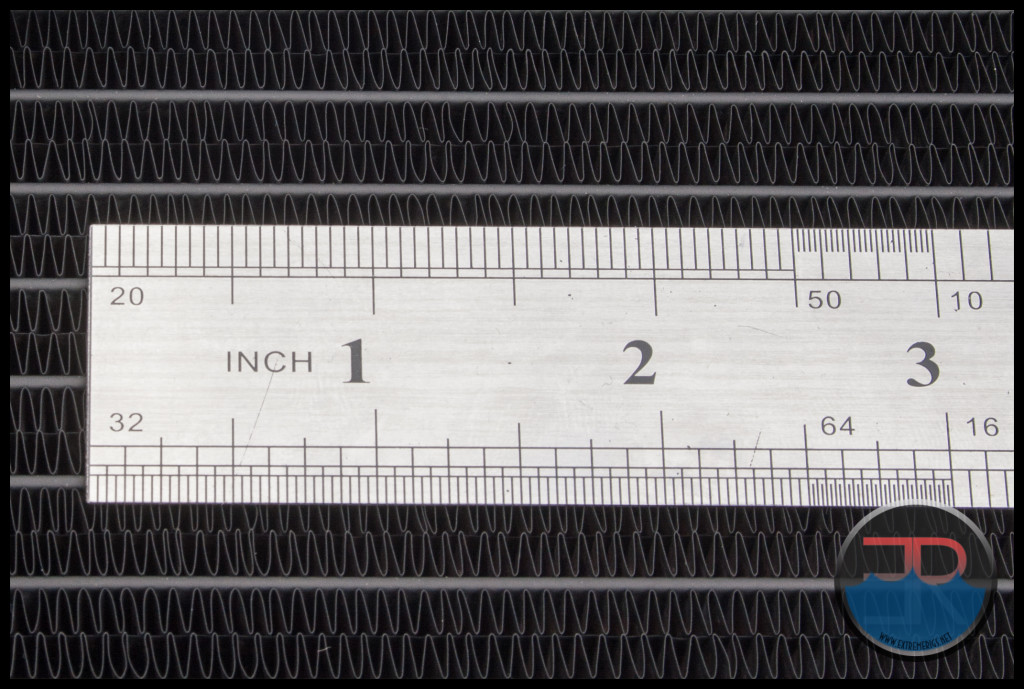


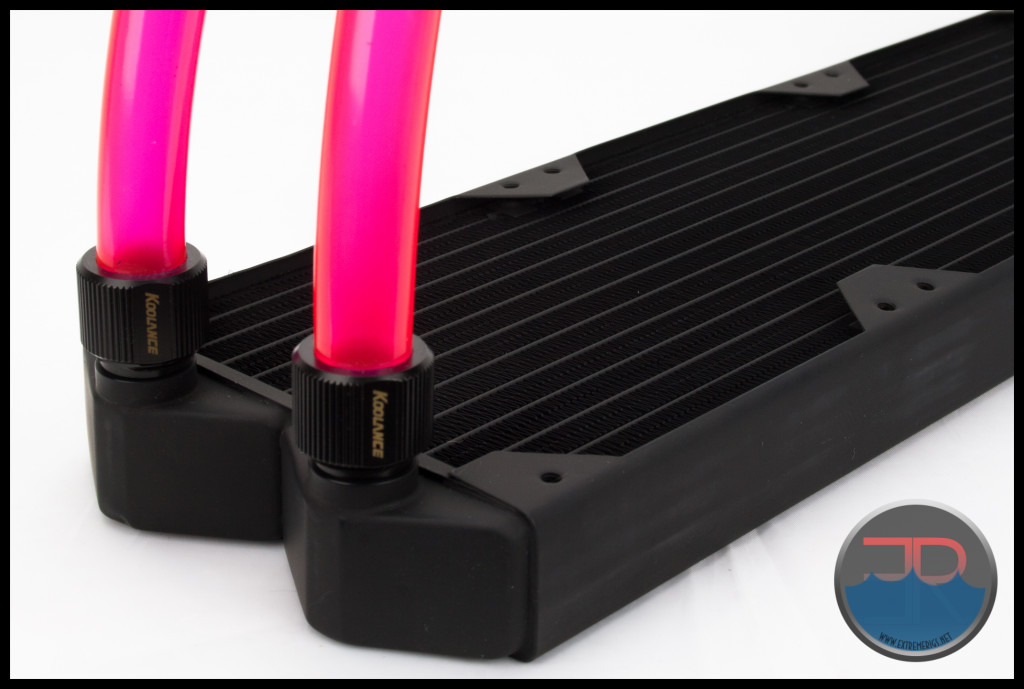



Okay, so this is the antithesis of the Nemesis GTS: great at push pull high speeds, were as the Nemesis GTS is king of push only low / medium speeds. Glad I got two Nemesis GTS for my build.
As always, thank you for the great review and additional data to the radiator database.
[…] Koolance HX-CU1020V 360mm Radiator Review […]
Your overall score lacks the scrutiny and precision that you have applied to your superb test and measurement criteria.
The feature set (extra ports, etc.) and paint finish have no bearing on thermal performance and when this low marking for ‘features & quality’ is applied as a major constituent of the overall summary score this excellent radiator immediately looks second rate to the casual reader and beginner in the field of water-cooling.
Many people who visit your site will not read or necessarily understand your entire review or the graphs which look at factors outside the original design spec for this radiator, i.e. it was not really intended to be used with low speed fans, hence the high fin density. Also most enthusiast and professional builders will be using a push/pull design, high static pressure fans and, spacing permitting, shrouds to reduce the ‘dead spot’ created by 120mm fan centre hubs ( or 140mm based radiators)
You write for a site called extremerigs not ‘boy racer add-ons’ and although I do not dispute the fairness and balance within your text, other than the over-emphasis on “extreme restriction” which is easily overcome, your final score is misleading. I am not suggesting that you are being specifically unfair to Koolance, but in my standing as a Senior Design Engineer in many fields of engineering for the past 24 years, your scoring puts too much emphasis on the non-essential.
As an enthusiast, I have built 80+ water-cooled rigs since 2003, three of them with large industrial grade heat exchangers (peltier based) running coolant down to -55 Celsius. Most people cannot afford or be bothered with the complexity of ‘chilled’ systems, but multiple radiator systems have become increasingly popular over the past decade. I have used multiple units of this excellent radiator and its thicker ‘big brother’ in more than 30 builds and various HW Labs Black Ice variants in around 20 builds with complex Quad SLI configurations without any issues or compromise!
Unfortunately, over the past 3 years the market has become flooded with flashy ‘boy racer’ radiators which may look impressive and have many extra features, but in what ways do these improve cooling performance?
Many of these features are about as useful as the range of ‘viewing windows’ which were being sold for HDs and PSUs until the worldwide economic crisis hit. I do not dispute that some features make the design process easier when deciding the route for tubing to water-blocks and manifolds, but adding a ‘universal’ feature set to every radiator design will add unnecessary cost.
Comments are closed.